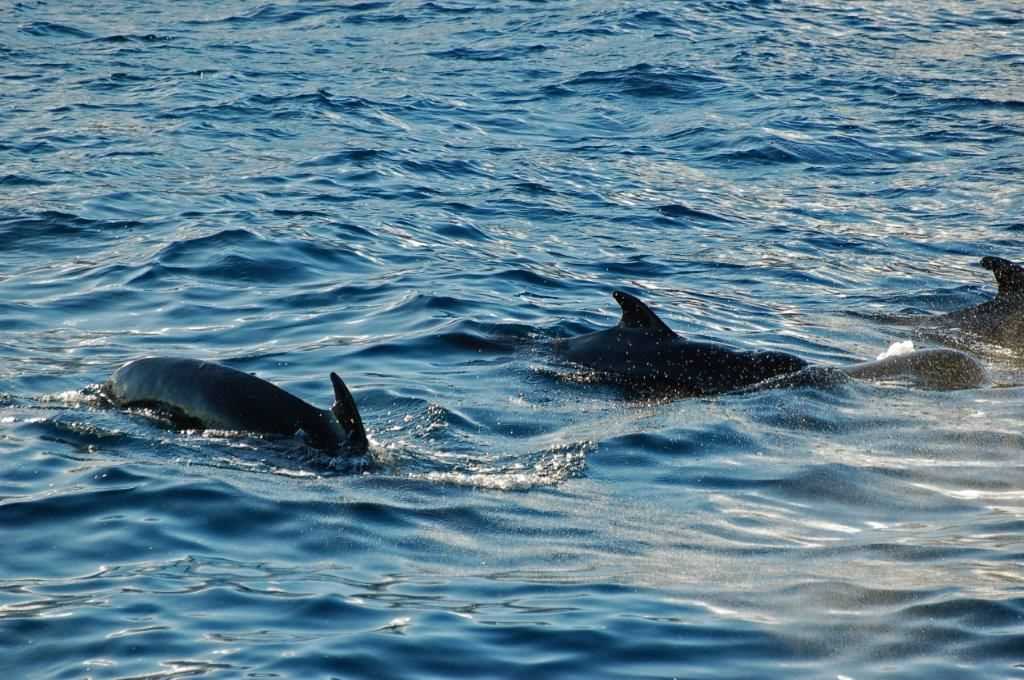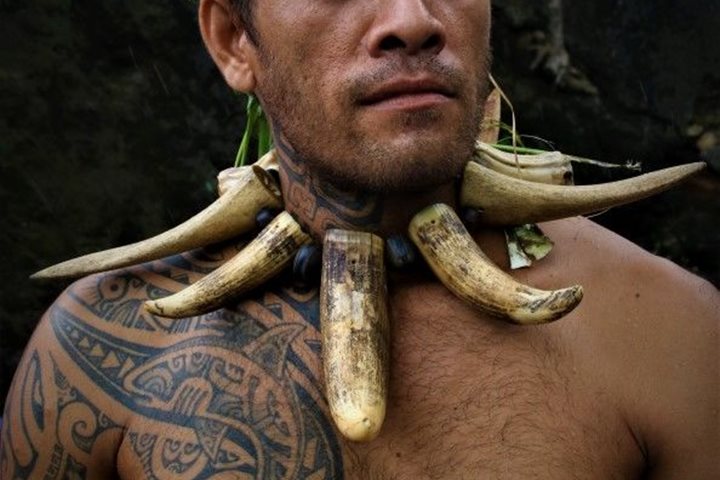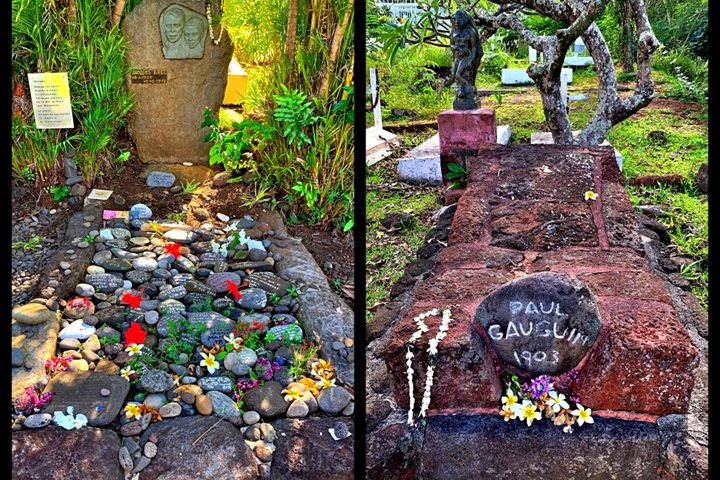The welcome into Fatu Hiva was warm and inviting as a pod of pilot whales swam around National Geographic Orion this morning. The whole family joined in, including baby whales swimming along the adults. A hydrophone was dropped into the water so that we might get a chance to hear the sounds clicks, whales use to communicate. A water-patrolling oceanic whitetip shark (Carcharhinus longimanus) swam back and forth along the side of the ship, as if to say no loitering here, please move along.
No worries, though. It was time for a quick breakfast and on to adventure. Fatu Hiva would be the beautiful setting for anything that took our fancy. For the ambitious, it was off birding or hiking to a waterfall and a dip in a crystal pool. For those in the mood for something a little less strenuous, there was a stroll through a romantic village and the entrancing song of the Polynesian villagers as they danced their welcome.
One group set off to find a beautiful waterfall hidden in the lush green mountainside. The mood of the explorers was boisterous with laughter and friendly banter. The level path quickly gave way a steady climb and then a slick rock trail through the beautiful vegetation. Once they passed the petroglyph man, hands upraised, it was too late to turn back. As they arrived at the waterfall, the more daring climbed a steep face to jump into the sparkling pool. Clouds drifted overhead as they lay on their back, floating in the water alive to all the senses.
Another group went birding. After a three-mile Zodiac trip south, we were met by our local guides. We transferred to 4WD trucks. After a short hike to a Fatu Hiva monarch (Pomarea whitneyi) territory that had recently lost its nest, due likely to predation; we resolved to reach to an active nest. Our leisurely birding walk turned into a more serious hike. The mud, sweat, and effort were all worth enduring, as everyone was able to view the males and females attending to the nest. It was very exciting to see them, especially since there are only 40 Fatu Hiva monarchs left in the world.
The recent introduction of rats into the island has put this beautiful species at the brink of extinction, and only thanks to the organization MANU, which that area free of cats and rats alike, there is a ray of hope for this species. After hiking back down to the trucks, we were treated to a journey over the mountains that included multiple points for sightseeing and delicious fresh fruits prepared by our local guides.
Diving groups took to the water and experienced either a cave of the sleeping shark or else to observe a color-morphing octopus. The explorers who left the ship to go on a drift snorkel were all treated to quite a special show as a large group of spinner dolphins (Stenella longirostris) exuberantly began interacting with the Zodiacs, jumping and spinning over the course of multiple passes. The evening concluded with a star-gazing tutorial by Tua, our personal star navigator, who with the lights of the sundeck turned off took us on a celestial tour with his laser pointer. A fantastic conclusion to an amazing day.





